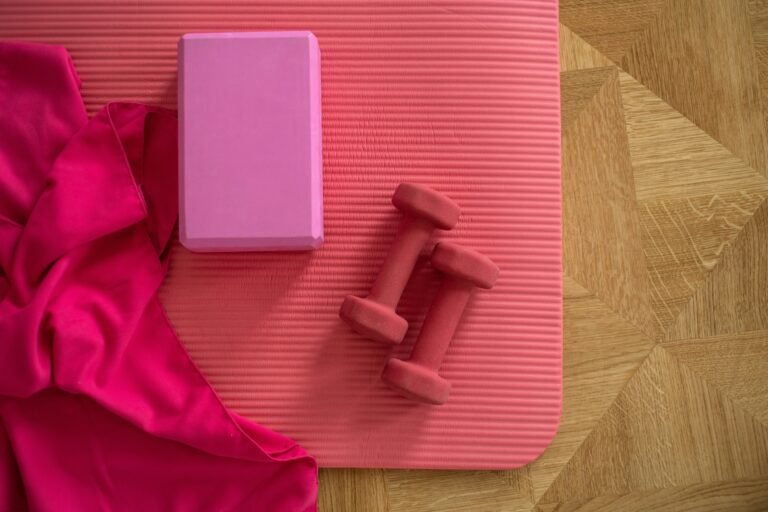Discover the perfect yoga mat with extra cushioning to support your joints and enhance your practice.
Yoga is not just a physical exercise; it’s a journey towards mental and physical well-being. Choosing the right yoga mat can make all the difference, especially if you have sensitive joints or are recovering from an injury. A mat with extra cushioning can provide the support and comfort you need to focus on your practice without discomfort.
For those with joint issues or who simply prefer a softer base, yoga mats with extra cushioning are a godsend. They help reduce the strain on your knees, hips, and elbows, allowing you to hold poses longer and with better form. This article will delve into the world of cushioned yoga mats, exploring their benefits and helping you find the best one for your needs.
We’ll cover everything from the benefits of extra cushioning, key features to look for, comparisons of different types of mats, tips for purchasing, and guidance on usage and maintenance. Whether you’re a seasoned yogi or a beginner, this guide will help you make an informed decision.
Table of Contents
Understanding the Importance of Extra Cushioning in Yoga Mats
Extra cushioning in yoga mats is crucial for those who seek additional comfort and joint support during their practice. The added thickness can help alleviate pressure on sensitive areas of the body.
- Enhanced Comfort: Provides a softer surface that reduces impact on joints.
- Joint Support: Particularly beneficial for individuals with arthritis or recovering from injuries.
- Improved Stability: A cushioned mat can help maintain balance and proper alignment.
Key Features and Capabilities of Cushioned Yoga Mats
When selecting a yoga mat with extra cushioning, it’s important to consider certain features that contribute to its effectiveness and usability.
- Thickness: Typically ranges from 6mm to 12mm, providing varying levels of padding.
- Material: Options include natural rubber, TPE, and PVC, each with unique benefits.
- Texture: Non-slip surfaces are essential for maintaining grip during poses.
Comparing Different Varieties of Cushioned Yoga Mats
Understanding the differences between various cushioned yoga mats can help you choose the right one for your practice.
| Feature/Type | Benefits | Best For | Considerations |
|---|---|---|---|
| Natural Rubber | Eco-friendly, excellent grip | Environmentally conscious users | Heavier and may have a rubber scent |
| TPE | Lightweight, durable | Travel and portability | Less cushioning than rubber |
| PVC | Affordable, widely available | Budget-conscious buyers | Not as eco-friendly |
Choosing the Right Yoga Mat for Your Needs
Selecting the perfect yoga mat involves considering your personal preferences and physical requirements.
- Assess Your Needs: Consider joint sensitivity and type of yoga practice.
- Try Before You Buy: If possible, test mats in a store to feel the cushioning and texture.
- Read Reviews: Look for feedback from other users about durability and comfort.
Using and Implementing Cushioned Yoga Mats in Your Practice
Incorporating a cushioned yoga mat into your routine can significantly enhance your practice.
- Start with Gentle Poses: Allow your body to adjust to the new mat’s surface.
- Focus on Alignment: Use the cushioning to improve posture and balance.
- Gradually Increase Intensity: As you become accustomed to the mat, challenge your practice with more demanding poses.
Caring for Your Cushioned Yoga Mat
Proper care and maintenance of your yoga mat can extend its lifespan and keep it in top condition.
- Regular Cleaning: Wipe down after each use with a mild detergent or mat cleaner.
- Avoid Direct Sunlight: Prolonged exposure can degrade the material.
- Store Properly: Roll up the mat loosely to prevent creases and tears.
Maintaining your yoga mat not only helps it last longer but also ensures a hygienic surface for your practice.
Expert Tips and Recommendations
- Invest in Quality: A higher upfront cost can lead to better durability and performance.
- Customize Your Practice: Use additional props like blocks or straps for enhanced support.
- Practice Consistently: Regular use of your mat can improve both physical and mental health.
- Look for Deals: Check for seasonal sales or discounts to save money on your purchase.
Common Questions About Yoga Mats with Extra Cushioning: Support Your Joints
Find answers to frequently asked questions about yoga mats with extra cushioning.
- Q: How thick should a yoga mat be for joint support?
A: Ideally, a mat should be at least 6mm thick to provide adequate cushioning for joint support. - Q: Are thicker yoga mats better for balance?
A: While thicker mats offer more cushioning, they may slightly reduce stability. Balance can improve with practice. - Q: Can I use a cushioned yoga mat for other exercises?
A: Yes, cushioned mats are versatile and can be used for Pilates, stretching, and other low-impact workouts. - Q: How do I clean my cushioned yoga mat?
A: Clean your mat with a gentle solution of water and mild detergent, and air dry it thoroughly. - Q: Is a cushioned mat suitable for hot yoga?
A: It depends on the material. Look for mats with moisture-resistant properties for hot yoga.
Conclusion
Yoga mats with extra cushioning offer significant benefits for joint support and comfort, making them a valuable addition to any practice. Whether you’re dealing with joint issues or simply prefer a softer surface, these mats can enhance your yoga experience.
Consider your specific needs and preferences when selecting a mat, and remember to maintain it properly for long-lasting use. With the right yoga mat, you can focus more on your poses and less on discomfort, leading to a more fulfilling practice.
Ready to enhance your yoga practice with the perfect cushioned mat? Check out this essential yoga mat to start your journey to better joint support: [Affiliate link placeholder]
As an Amazon Associate I earn from qualifying purchases.
Check out this related post: Smart Fitness Mirrors: Interactive Workouts with Virtual Trainers
Explore this topic: Cushioning
Last updated on August 7, 2025






